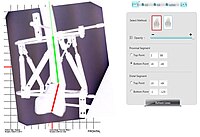
Photo from wikipedia
Computer-aided orthopedic surgery (CAOS) is now about 25 years old. Unlike neurosurgery, computer-aided surgery has not become the standard of care in orthopedic surgery. In this paper, we provide the… Click to show full abstract
Computer-aided orthopedic surgery (CAOS) is now about 25 years old. Unlike neurosurgery, computer-aided surgery has not become the standard of care in orthopedic surgery. In this paper, we provide the technical and clinical context raised by this observation in an attempt to elucidate the reasons for this state of affairs. We start with a brief outline of the history of CAOS, review the main CAOS technologies, and describe how they are evaluated. We then identify some of the current publications in the field and present the opposing views on their clinical impact and their acceptance by the orthopedic community worldwide. We focus on total knee replacement surgery as a case study and present current clinical results and contrasting opinions on CAOS technologies. We then discuss the challenges and opportunities for research in medical image analysis in CAOS and in musculoskeletal radiology. We conclude with a suggestion that while CAOS acceptance may be more moderate than that of other fields in surgery, it still has a place in the arsenal of useful tools available to orthopedic surgeons.
Journal Title: Advances in experimental medicine and biology
Year Published: 2018
Link to full text (if available)
Share on Social Media: Sign Up to like & get
recommendations!